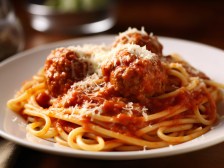A Beginner’s Journey: Learning How to Make Your Own Delicious Pizza Dough
Making your own pizza dough is a rewarding and delightful experience. Not only does it allow you to customize your pizza to your liking, but the process itself can be fun and therapeutic. In this guide, we will take you through the steps of making delicious pizza dough from scratch—perfect for beginners.
Understanding the Ingredients
Before diving into the recipe, it’s important to understand the essential ingredients needed for a basic pizza dough. You will need flour (preferably high-protein bread flour), water, yeast, salt, and olive oil. Each ingredient plays a critical role: flour provides structure; water hydrates the flour; yeast helps in rising; salt enhances flavor; and olive oil adds richness.

Step 1: Mix Your Ingredients
To begin making your own pizza dough, start by mixing your dry ingredients first. In a large bowl, combine 2 cups of bread flour with 1 teaspoon of salt and 2 teaspoons of active dry yeast. Gradually add about three-quarters of a cup of warm water (not too hot) while stirring with a wooden spoon or spatula until it all begins to come together into a shaggy mixture.
Step 2: Knead Your Dough
Once your mixture has formed into a shaggy ball, transfer it onto a lightly floured surface. Knead the dough by pressing it down with the heel of your hand and folding it over itself repeatedly for about 8-10 minutes until it becomes smooth and elastic. If it’s too sticky, sprinkle in just enough extra flour as needed—be careful not to add too much or you’ll end up with dense crust.
Step 3: Let It Rise
After kneading, shape your dough into a ball and place it in an oiled bowl — turning it once so that all sides are coated. Cover the bowl with plastic wrap or a clean kitchen towel and let it rise in a warm place for about 1-2 hours or until doubled in size. This rise time is crucial as it’ll develop flavor and texture.
Step 4: Shape Your Pizza Base
Once risen, gently punch down the dough to release any air bubbles formed during fermentation. Transfer it back onto floured surface; divide if you’re making multiple pizzas. Roll out or stretch each piece into your desired thickness using rolling pins or hands—keep in mind that thicker crusts require longer baking times than thin crusts. Now you’re ready to top off your pizza with sauce, cheese, and toppings before baking.
Congratulations on learning how to make your own delicious pizza dough. With practice comes mastery—don’t hesitate to experiment with different types of flours or add herbs for added flavoring. Enjoy crafting homemade pizzas that are sure to impress family and friends.
This text was generated using a large language model, and select text has been reviewed and moderated for purposes such as readability.











